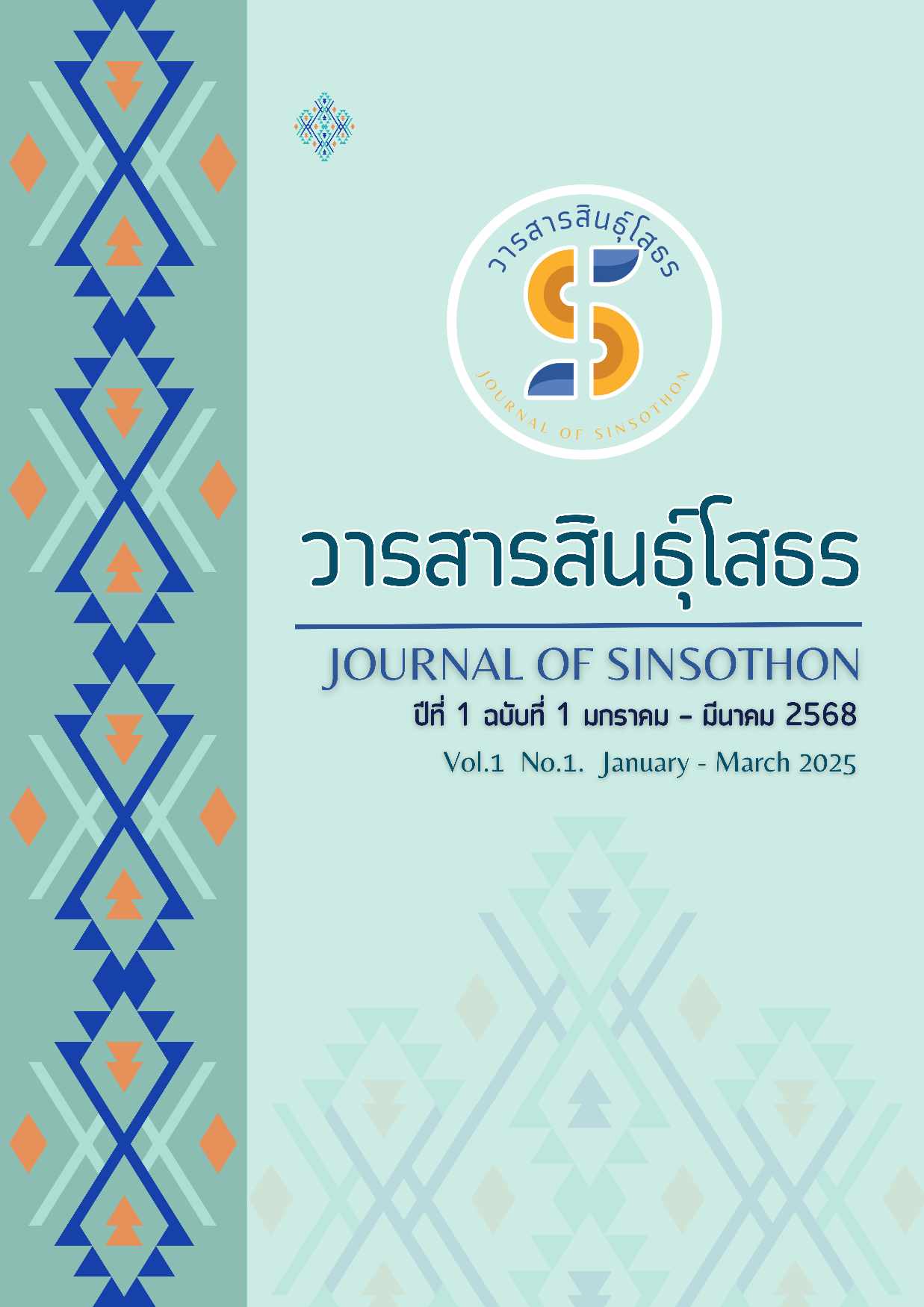Guidelines for applying the principles of the Four Noble Truths to improve quality of life
Keywords:
Application, Four Noble Truths, Quality of LifeAbstract
This academic article aims to present an approach to applying the Four Noble Truths as a framework for improving quality of life. The study is conducted through analysis and synthesis of relevant literature and academic documents. The findings indicate that improving quality of life is a fundamental goal for individuals, and one of the most significant Buddhist teachings in this regard is the Four Noble Truths, which consist of 1.Dukkha (Suffering): Recognizing the existence of suffering by examining one's physical and mental discomfort. 2.Samudaya (Cause of Suffering): Identifying the root causes of suffering. 3.Nirodha (Cessation of Suffering): Finding ways to eliminate suffering at its root. 4.Magga (Path to the Cessation of Suffering): Utilizing mindfulness as a long-term strategy for resolving problems. The process of quality-of-life development involves understanding the nature of life and suffering, enhancing emotional and cognitive management skills, fostering wisdom in problem-solving, achieving balance and well-being, improving relationships and social harmony, and cultivating morality and ethics through the practice of the Noble Eightfold Path. The Four Noble Truths are not merely religious teachings but serve as a powerful tool for mental and personal development. Their application in daily life not only helps individuals understand and manage suffering but also reduces cravings and attachments, leading to comprehensive quality-of-life improvement. This approach provides a conceptual framework and practical skills for mindful and wise living, ultimately fostering sustainable happiness. Applying these teachings can be challenging; however, consistent understanding and practice of the Four Noble Truths lead to long-term improvements in quality of life. This enables individuals to confront challenges and suffering with resilience, wisdom, and a deep sense of well-being. Thus, this approach is crucial in cultivating a meaningful and valuable life.
References
ชนาธิป ศรีโท. (2563). ความเข้าใจเรื่องอริยสัจ 4 ในพระพุทธศาสนา. วารสารวิชาการพระพุทธศาสนาเขตลุ่มแม่น้ำโขง, 3(2), 56-69.
ชนิดาภา พรหมิ. (2566). การพัฒนาหลักสูตรบูรณาการตามหลักอริยสัจ 4. วารสารบวรสหการศึกษาและมนุษยสังคมศาสตร์, 4(1), 38-45.
พระธรรมปิฎก (ป.อ.ปยุตฺโต). (2548). วันอาสาฬหบูชาและวันเข้าพรรษา. (พิมพ์ครั้งที่ 4). เรียกใช้เมื่อ 25 กันยายน 2567 จาก https://www.watnyanaves.net/th/book_detail/542.
พระมหาทองเก็บ ญาณพโล. (2567). การศึกษาเรื่องสัญชาตญาณและการเชื่อมต่อจิตวิญญาณในพระพุทธศาสนา. วารสารวิชาการรัตนบุศย์, 6(2), 583-560.
พระรังสรรค์ ติกฺขปญฺโญและคณะ. (2565). การพัฒนาคุณภาพชีวิตตามหลักอนุปุพพิกถา. วารสารวิจัยวิชาการ, 5(2) 35-42.
พิษฐ์ มะลิและคณะ. (2563). มัชฌิมาปฏิปทา : แนวทางปฏิบัติให้ถึงความดับทุกข์. วารสารบัณฑิตศาส์น มหาวิทยาลัยมหามกุฏราชวิทยาลัย, 18(1), 142-154.
ภิกษุณีรตนธมฺมเจตนา. (2561).การอธิบายตีความ“ตัณหา”ด้วยหลักเทสนาหาระ. วารสารปรัชญาปริทรรศน์, 23(2), 1-9.
สมเด็จพระพุทธโฆษาจารย์ (ป.อ.ปยุตฺโต). (2548). อริยสัจจ์ 4. เรียกใช้เมื่อ 25 กันยายน 2567 จาก https://www.watnyanaves.net/th/book-reading/542/4.
เสริมศรี ชวานิสากุลและคณะ. (2565). ศึกษาการประยุกต์ใช้หลักอริยสัจ 4 ในชีวิตประจำวันตามแนวแพทย์วิถีธรรม. วารสารปรัชญาอาศรม, 4(1), 62-75.
อุทัย ภูคดหินและคณะ. (2565). การจัดการความเครียดโดยใช้หลักอริยสัจ 4 ในการบริหารจัดการองค์กร. วารสารพุทธปรัชญาวิวัฒน์, 6(2), 650-661.
Downloads
Published
Issue
Section
License
Copyright (c) 2025 Journal of Sinsothon

This work is licensed under a Creative Commons Attribution-NonCommercial-NoDerivatives 4.0 International License.
Authors who publish with Journal of TCI agree to the following terms:
- Authors retain copyright and grant the journal right of first publication with the work simultaneously licensed under a Attribution-NonCommercial-NoDerivatives 4.0 International (CC BY-NC-ND 4.0) that allows others to share the work with an acknowledgment of the work's authorship and initial publication in this journal.
- Authors are able to enter into separate, additional contractual arrangements for the non-exclusive distribution of the journal's published version of the work (e.g., post it to an institutional repository or publish it in a book), with an acknowledgment of its initial publication in this journal.
- Authors are permitted and encouraged to post their work online (e.g., in institutional repositories or on their website) prior to and during the submission process, as it can lead to productive exchanges, as well as earlier and greater citation of published work.






